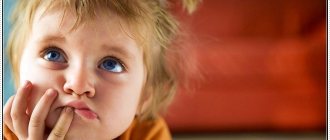Fairytale therapy - how does this method work?
Fairytale therapy is a method that helps a child (or adult) concentrate on their problem. When used skillfully, fairytale therapy can provide the psychologist with clear routes for correcting behavior and treating depressive conditions in patients.
Each fairy-tale story plays out a specific situation that happened in the patient’s life. The characters are endowed with the characters of real people, and a conflict situation always has a logical solution. This therapy makes a connection between the events that occur in a fairy tale and reality, and transfers magic into everyday life.
The main goal of fairy tale therapy is the development of personality and care for the soul. The kid meets the best version of himself in a fairy tale, learns from the hero to do good deeds, to be happy and fair.
Psychological schools
Despite the fact that fairy tale therapy as a separate direction in psychology took shape only in 1997, already before that the influence of this genre on personality development was considered in various psychological schools.
Carl Jung
Swiss psychiatrist, psychologist, teacher. School of Analytical Psychology. He proved that in his behavior and when making responsible decisions, a person often acts unconsciously (he cannot explain why he did what he did), but is guided by mythologies and archetypes from fairy tales.
As a child, the boy was constantly read the same fairy tale - about Rapunzel. And in the future, he chose women only with long hair. The child grew up reading scary fairy tales and subsequently began to get involved in extreme sports in order to experience the feeling of fear and a surge of adrenaline again and again.
Eric Bern
American psychologist, psychiatrist. School of transactional and scenario analysis. He developed his own fairy tales, calling them counter-scenarios. They acted as follows. Bern believed that every person is programmed from childhood to follow a typical path, and rarely does anyone manage to turn off it on their own. For some, this path is positive, leading to success (mentally and morally healthy people), while for others it is negative (under the influence of psychological trauma, internal complexes).
For example, for a girl, all the guys she started dating ended up abusing alcohol. All because her father drank and thus seemed to program his daughter’s life path for such a fate. Byrne used fairy tales to show his patients a possible alternative to the development of events.
D. B. Elkonin
Soviet psychologist who worked in the field of child and educational psychology. The theory of activity approach. He selected fairy tales for problem children in such a way that they could form in them “morally correct” behavior that would fit into the framework of society. So that a child does not leave home and obeys his parents - read “Kolobok”, so that he understands the success of collective work and mutual assistance - “Turnip”, and is kind and sincere - “Morozko”.
What problems can fairy tale therapy help you cope with?
Collective writing of fairy tales will help preschoolers get comfortable in a group, learn to make friends with their peers, and teenagers - understand themselves and their classmates. A jointly created fairy tale will reveal which of the children plays what roles in life, and will provide an opportunity to look at their character and behavior from the outside.
If parents compose a fairy tale together with their child, this makes it possible to speak the same language, to find out the child’s hidden thoughts, dreams and aspirations. A fairy tale will develop creativity and a sense of humor in both adults and children.
If you ask your child to draw or mold magical characters from plasticine, you can effectively practice the skills of writing, modeling, drawing, and help the young storyteller develop motor skills, perseverance and attentiveness.
Fairytale therapy copes with such children's problems as difficulties in communication and learning, as well as loneliness, low self-esteem, laziness, fears, aggression, excessive activity, psychosomatic diseases, and will help determine the reason why a child refuses to go to kindergarten or school.
Using the language of fairy tales, adults comprehend the nuances of interpersonal relationships and get to know themselves better. A magical story helps you take a fresh look at the world around you and improve your quality of life.
Fairy tales in psychotherapy are divided into 4 main groups according to the problems they address:
- For difficulties in communication
The fairy tale tells about the conflicts, quarrels, and grievances that a child has in kindergarten, at school, in the family, and on a walk.
- During age crises
the child seems to get used to his new role, to a new position (for example, to independence in kindergarten); all these moments can be played out in a fairy tale.
- With internal experiences
in the fairy tale, the hero is shown - the baby himself, his inner world is examined, complexes and contradictions are revealed, so that the child can answer the question: “What’s wrong with me?”
- For worries and fears
It is necessary, with the help of a fairy tale, to determine what the baby is afraid of, what prevents him from developing, what takes energy.
Now let's understand how fairy tales work
Fairytale therapy is the best way to discover a child’s hidden and overt experiences, which helps to take a big step forward towards development.
There are several areas in which this method is used, so let's look at this issue. Fairytale therapy is used as a tool for:
- Development of creative abilities, which in the future allow the child to find optimal solutions in different life situations. They also help you look at events from different angles, thereby broadening your horizons.
- Transferring life experience from generation to generation. Fairy tales have been told to children at all times, thus ancestors shared their knowledge accumulated earlier. However, if you simply tell a story, then it remains on a subconscious level for the child, but as soon as you discuss the work with your child, the acquired knowledge will be in consciousness, thanks to which he will be able to use it in a certain situation. The method also helps to convey to the recipient life values and norms of correct behavior in society, so adaptation to society is much easier and less painful. Another important skill that a child acquires during fairytale therapy is the ability to value friendship, love, forgive the offender and build relationships with parents.
- Self-knowledge. Children, regardless of age, can find it very difficult to recognize their own emotions and experiences. A fairy tale allows a child to live the plot together with the main character, thanks to which he can freely express his feelings, which contributes to the sustainable development of his personality.
- Psychotherapy. It is used by a specialist doctor who helps find a solution to a difficult situation through fairy tale therapy, as well as activate the protective mechanisms of the psyche, get rid of phobias and complexes.
- Speech therapy. Unfortunately, nowadays there are many preschool children with speech disorders, and as a solution to this problem, speech therapists today often resort to fairy tale therapy, which promotes the introduction of sounds into free speech, develops all components of memory, the syllabic structure of words and the ability to formulate coherent statements. .
- Eliminate deficit thinking and eradicate limiting beliefs. In the 21st century, there are more and more conscious people who are engaged in self-development, so a fairy tale is the best way to show a child that the world is full of goodness, and nothing is impossible in it, because if you really want something, the result will not take long to come.
Together we draw up a lesson plan for fairy tale therapy
In order for fairy tale therapy to give good results in working with children’s problems, we recommend using the following lesson structure:
- First, you need to create a positive attitude and a suitable atmosphere so that children want to work with a fairy tale. Here, joint exercises with a team are best suited, where the guys can feel each other, get to know each other better and loosen up a little;
- Next, you should remember your previous fairytale therapy session to consolidate the positive results and progress. The adult asks the kids questions: What did they remember? What conclusions did you draw? Did you manage to apply the experience gained in life?
- Afterwards a new fairy tale is told with the children involved in it. To do this, the narrator of the story asks to help some hero in solving his problem;
- The next stage is conducting an interactive game in which children will be able to apply the experience gained in the current lesson;
- Then the leader of fairytale therapy asks the children how they can apply the knowledge they have acquired today in life;
- The lesson is summarized with conclusions. An additional incentive to participate in fairy tale therapy will be some kind of encouragement for the most active and involved children in the process. Each child can keep a diary and receive stickers according to the results of the activity.
- As the final stage of fairy tale therapy, it would be good to again use collective exercises, for example dance - round dance, or any others aimed at contact between the participants of the lesson.
A few rules for working with fairy tales
As was said earlier, all fairy tales are suitable for fairy tale therapy, but there are still basic principles when constructing them that must be taken into account:
Contact must be established between the storyteller and the child, so the face, gestures, facial expressions and emotions must be visible and understandable to the addressee; for this it is best to tell a fairy tale rather than read it;
The plot of the fairy tale should be clear to those for whom it is intended, and there should be no long pauses;
If a child has questions during fairytale therapy, then they should not be ignored, it is better to stop and help sort them out together;
At the time of the story, parents should also ask questions to their child in order to understand how he thinks;
It is important to clearly divide heroes into positive and negative.
How is fairytale therapy carried out?
When a fairytale therapy session is conducted by a child psychologist, he chooses which method is suitable for a given child, and also determines the direction of the internal problem. Currently, there are five most common methods of conducting fairy tale therapy; all of these methods have a common goal - to identify and eradicate fears and negative attitudes, but still each of them has its own characteristics:
- The classic option is telling a fairy tale , which, when discussed, helps to correct children’s behavior in a safe manner;
- The method of composing a fairy tale includes the child in the creative process and allows you to see the course of his thoughts, as a result of which it becomes clear which part of the inner world needs help;
- Drawing a fairy tale is very similar in its focus to the previous method, only in this case the specialist looks at what colors were used in the drawing, how the child sees the characters in the work, as well as the general mood of the picture;
- When staging a fairy tale , children are asked to show as best as possible the character they want to transform into, demonstrate his character, demeanor, gait, etc. After all, when he is in the image, his hidden desires and emotions appear, and also the qualities of character that need to be strengthened are played out. Thanks to the gestures and intonation used by the child in the process, the psychologist determines the direction of the work.
- A very interesting and non-standard option for fairytale therapy is making dolls . This method has a positive effect on the child and copes with many different tasks:
- Improves mutual understanding within the family;
- Develops speech;
- Reveals creative abilities;
- Builds emotional stability;
- Develops motor skills;
- Promotes the development of communication skills;
- Relieves tension.
- The sand therapy method helps create a relaxed environment for children in which they feel very comfortable, because playing with sand is one of children’s favorite activities. Sand in the hands has a calming effect and normalizes the emotional background, and drawing a fairy tale from sand or playing with fairy-tale characters with it is a doubly interesting pastime. In order to conduct a fairy tale therapy session using this method, you will need a box of clean, fine sand and figurines of fairy tale characters.
Types of psychotherapeutic tales
There are five main types of fairy tales:
- Didactic fairy tales
They set themselves the task of sharing new knowledge and skills, suggesting possible options for behavior in a certain situation, and giving answers to questions. Psychologists use them when counseling preschool and primary school children, adolescents and adults. Usually, after reading a fairy tale, you are asked to complete a simple task.
- Psychological tales
– these are the author’s fictional stories that can influence the development of the listeners’ personality through the presentation of vivid metaphors.
- Psychotherapeutic tales
have the greatest effectiveness; these are wise and beautiful stories with deep meaning on the theme of a person’s relationship to himself, to others, to the whole world. Such fairy tales have the task of correcting fears and phobias, eliminating suffering, and helping patients overcome trauma.
- Psychocorrectional fairy tales
are composed with the goal of carefully adjusting the behavior and character traits of an adult or child. Typically, such stories may echo everyday reality or contain many abstract metaphors, and therefore require clarification and discussion. Psychocorrectional fairy tales are used when working with aggressive adults and hyperactive children and are necessarily tailored to a specific individual.
- Meditative tales
they have neither a bright plot nor a negative character, they do not talk about an obvious conflict, their task is to set the patient up for a psychotherapeutic session, activate the unconscious thinking process, motivate a decision or action, and help calm down before going to bed.
Principles
The entire technology of fairy tale therapy is based on 4 basic principles.
Principle 1. Values
The main thing is to convey to a person’s consciousness information about the correct life values that he should be guided by in any situation when making decisions. After reading the fairy tale, you should definitely discuss such of them as mutual assistance, love, friendship, compassion, truth, faith, dignity, humanity, kindness.
Principle 2. Life force
After a person has mastered the basic values, work is done to realize that any action requires inner strength. Everyone has it, but for most it’s like a door blocked with stones (problems, doubts, disappointments, psychological traumas). You can understand that love, faith, hope are the stronghold of existence, but at the same time do nothing to ensure that they enter life. The fairytale therapist helps the patient realize his own inner strength and free himself from such blockages.
Principle 3. Versatility
The psychologist sorts out each fairy tale, covering the plot and characters from different positions. This is done so that a person understands that one cannot see only bad things in the world. Any event can be viewed from different angles and positive aspects can be found in it.
Principle 4. Two realities
Fairy tale therapy creates two realities in a person’s mind: fairy-tale (mental) and everyday (social). The specialist’s task is to weave the resources of the former into the patient’s life practice through associations.
Fairytale therapy in the practice of a psychologist
The effectiveness of fairy tale therapy depends on the correctly chosen genre (and the metaphor included in the story). When making a choice, the therapist relies on the age of the listeners, their interests and beliefs, and the nature of the existing difficulties.
Fairy tales are used in psychotherapy:
- in diagnostics, the task of which will be to determine the main life scenarios of the patient, his behavioral characteristics, abilities and attitude;
- in psychotherapy, the task of which will be to solve existing psychological problems and consolidate a new model of behavior;
- in prognostication, the task of which will be to help the patient understand the influence of his current behavior on future events.
The following actions are used during therapy:
- reading or retelling a fairy tale;
- discussion of an existing fairy tale;
- inventing your own story/fairy tale;
- drawing, modeling, appliqué of fairy-tale events or characters;
- a dramatization or theatrical production based on a fairy tale.
Therapeutic fairy tales - what are they about?
The most popular use of fairy tale therapy is for preschoolers - examples of fairy tales created by psychologists, teachers and parents speak for themselves. There are many plots of such stories; they are composed by mothers literally “on the fly” and are based on everyday everyday situations.
Harmful clothes
Once upon a time there was a boy, Petya, and he really did not like to dress. As soon as it was time to go outside, Petya began to cry, stamp his feet, run away and hide.
On one of these days, dad decided to go for a walk with Petya.
- Petya, let's go get dressed! It's snowing outside, let's build a snowman! Wear a jumpsuit.
- I won’t! - Petya shouted, - it’s too thick, uncomfortable, I need to fasten the lock, pull the trouser legs, let it put it on me!
And suddenly the overalls jumped up and began jumping around Petya, pushing, shoving and tickling.
- Ay! What is it, I don’t need this!
“It’s not necessary, you wanted to put it on yourself,” Dad was surprised, “well, let’s put on the boots then.”
- No! – Petya shouted louder than before, “They are blue, but I want red ones!”
Bam! – and the boots turned into two hot red lights.
- Aaaaah! – Petya shouted, “I’m afraid!” Take them away, dad!
“But you yourself wanted red ones,” dad was perplexed, “well, you don’t want them, okay.” Let's at least put on a hat then.
- I don’t like her, she’s kind of tough, prickly! I want soft, fluffy!
Rrraz,” and the hat turned into a white rabbit, he began to clap his paws on Petya’s ears, knock him on the head and tried to bite his nose.
- Paaaaaaa! – Petya screamed with all his might, “save me!”
- But Petya, you yourself wanted a fluffy and soft one, look what a wonderful hat it turned out to be.
- I don’t want such clothes, I’m afraid of them! Break her spell quickly!
“But she turned out the way you wanted.” It was you who bewitched her, Petya. Only you can change your clothes back.
Petya looked at his dad in disbelief and fear, but decided to try.
- Jumpsuit, hat, boots, break your spell! Become the same as you were, I’ll put you on right away and run for a walk with dad!
And then a real miracle happened: a rabbit jumped onto a chair in the hallway and turned into Petya’s hat, two lights went out on the floor nearby, becoming boots again, and a living jumpsuit jumped straight into Petya’s hands and turned into the most ordinary, stationary clothing.
“Phew,” Petya exhaled, “well, finally, all my favorite, beautiful, warmest and most comfortable things have returned.” Hooray! Quickly get dressed and run to build a snowman!
Petya smiled, quickly got dressed and ran outside with his dad. Since then, he carefully folds his things, dresses and undresses himself, and even faster than anyone else.
Principles and methods of work of a fairytale therapist
The fairytale therapist builds his work with children in accordance with the principles:
- the story must be emotional;
- the child, while listening, should see the narrator’s facial expression, his emotions and gestures;
- you need to tell a fairy tale in an even, melodious voice, using repetitions;
- the tale should not contain too long pauses;
- the story should imply the likelihood of several possible solutions and answers to questions;
- current problems are encrypted in the text using images and metaphors;
- heroes must be clearly positive and clearly negative;
- While reading, it is necessary to monitor the behavior and emotions of the listener and be able to correctly interpret them.
You can fully study all the effective methods and techniques of fairy tale therapy on our distance professional retraining course. You will not only acquire useful knowledge, but also gain the right to apply it in the practical work of a psychologist.
Recommended books
- Gnezdilov A. V. Author's fairy tale therapy.
- Zinkevich-Evstigneeva T. D. Workshop on fairy tale therapy.
- Kozlova E. G. Fairy tales and tips. Problems for a math club.
- Lomakina G. Fairy tale therapy.
- Prokhorov V., Rubanova S., Otradnova A. The healing power of fairy tales.
- Sakovich N. A. Practice of fairy tale therapy.
- Sokolov D. Fairy tales and fairy tale therapy.
- Stishenko I.V. Fairytale therapy for solving personal problems.
- Tkach R. M. Fairytale therapy for children's problems.
- Tkacheva T. Psychotherapeutic fairy tales for adults and children.
In the above books you can find examples of fairy tales and methodological recommendations on how best to use them in working with adults and children. Despite the fact that not all psychologists share the enthusiasm for the effectiveness of this trend, it is incredibly popular all over the world and over 20 years has helped tens of thousands of people find harmony in their souls and get rid of phobias.
Results of using fairy tale therapy
We draw our first ideas about good and evil, justice and deception from fairy tales. Good stories and beloved fairy-tale characters help young children become brave and resilient. Fairy tale treatment provides its patients with an alternative behavioral strategy that they can accept or reject.
We are all different, one child is inclined to fantasize, another loves to run and jump, another sits for hours sculpting animals or constructing a dollhouse. By combining various techniques, an experienced fairytale therapist can help each child experience and understand many situations that he has already encountered or will inevitably encounter in adulthood.
We are accustomed to viewing a fairy tale as entertainment, as a way to broaden our horizons, but in psychology a fairy tale is given a much greater role and significance, because it:
- can solve many life problems and answer internal questions;
- develops thought processes, improves memory, logic, attention;
- is able to convey from generation to generation the concepts of justice, kindness, love, fidelity;
- makes it possible to identify forgotten childhood psychological traumas;
- saturates the personality emotionally, causes sincere feelings;
- capable of changing human behavior.
It's time to get acquainted with the types of fairy tales
In fairy tale therapy, it is also very important to make the right choice of fairy tale typology. And what they are, we will now look at:
- Folk tales are the most ancient type of fairy tales, which are based on the centuries-old experience of our ancestors. These include various myths, legends and parables, which contain the nation’s general ideas about good and evil.
- Artistic, unlike folk, are the result of one person - the author. In such stories, the writer pays special attention to details, descriptions and images of characters. Also, this type of fairy tale has its own classification:
- Household;
- Magical;
- About animals;
- Scary.
- Psychocorrectional tales should be similar to the child’s problem, but point to it indirectly, and its plot should be drawn up according to a certain scheme:
- At the very beginning there is an introduction to the characters of the work;
- The main character has some kind of resonant situation, similar to the one to whom the fairy tale is addressed;
- It shows how the heroes are looking for ways to overcome the problem, and what its essence is;
- Then the hero successfully overcomes all difficulties;
- The ending of a correctional fairy tale must certainly be positive, because this gives the child a feeling of psychological safety, and he understands that no matter what negative and difficult circumstances happen in life, everything will certainly be fine;
- The conclusion that the characters make, after which their lives change for the better.
- Psychotherapeutic tales can solve almost any problem, even when all other psychological methods are no longer effective. This type of work is aimed at solving more serious problems: losses, finds, life, death, love, and so on. They do not necessarily have a happy ending, but they are very good at stimulating personal growth.
The types of fairy tales can be completely different, and each of them can answer a specific problem, so in fairy tale therapy it is very important to rely on the characteristics of each child.
In fairy tale therapy, not only different types, but also genres of works are used.
When choosing a work for fairy tale therapy, you need to remember the main rule: each child must have an individual approach, and the story must be relevant to his problem. Genres can be completely different:
- The parable is mainly aimed at strengthening spiritual values, and its moral is most often formulated clearly and directly, not in a veiled manner;
- A fable is very similar in form to a parable, the difference is that it is shorter and contains a moral lesson, as a rule, at the beginning and end of the work;
- Epic and legend are most popular among teenagers; their plots, based on real events, often involve battles;
- Myth is an ancient story of our ancestors about the creation of the world, heroes, kings, Gods and natural phenomena, which helps to better understand the mentality of different peoples;
- A fairy tale in its form is the freest of all genres, and unlike epics, legends and myths, it can tell not only about the past, but also about the future. The morality in it is veiled, so the work is more delicate and unobtrusive.
Fairy tales are selected separately for each age group
At any age, a child has his own characteristics that must be taken into account when using fairy tale therapy:
- 2-3 years. At this stage in life, children are separated from their parents for the first time while attending kindergarten, so at this age fairytale therapy helps relieve fears and anxieties, relieve emotional stress and set hyperactive children to sleep. Also promotes the development of imagination, attention and speech;
- 3-5 years. At this age, children begin to feel a personality within themselves, fears, crises, and whims appear. One of the most important skills is communication with building a full dialogue. Parents need to take into account that little people of this age group often associate themselves with animals, so fairy tales with them will be the most interesting, but works with the participation of princesses, wizards and fairies are no less fascinating for them;
- 5-6 years. This period is characterized by the appearance of the first complexes and feelings of self-doubt, so magical stories about transformations and wonderful reincarnations delight children, and serve as an excellent assistant for adults in correcting behavior and thinking;
- 6-10 years. A “new world” opens up for children at this age - school, so it is necessary to help your child adapt as comfortably as possible, teach him how to set and achieve his first goals, and also continue to consolidate the acquired skills. New author's fairy tales that have not been read (listened to) before will arouse genuine interest among the children;
- Adolescence is one of the most unpredictable and difficult periods. A person is fully aware of himself as a unit of society with his own thinking, and is often in search of an “inner self.” The easiest to understand are stories, parables and legends.
Fairy tales have always helped children go on incredible fantastic journeys, and the magic that each story gives gives the child the opportunity to learn to think positively and realize that nothing is impossible in life. It is important for parents to remember that a well-timed fairy tale can help a little person cope with a serious problem, so be more attentive to your children, spend more time together, because everyone needs care and warmth!
Today, the rhythm of life is much faster than that of our ancestors, and time spent with family has become an invaluable resource, and fairy tales help adults and children solve the problem of lack of time together.
It should also be noted that there is now a wider choice of fairy tale broadcasts:
- read;
- tell;
- listen to audio stories.
At all times, fairy tales have always aroused delight and interest among children. Every child looks forward more than anything else to the evening when loved ones will tell a new exciting story or a continuation of the one they told yesterday. For parents, a fairy tale is a great opportunity to convey their knowledge and experience to their child in a playful way; it helps to speak the same language with him and once again show concern.
TIPS FOR PARENTS
With the right approach, using fairy tales you can solve the following problems:
- laziness;
- sloppiness;
- deception;
- aggression;
- reluctance to go to kindergarten.
In case of serious phobias or the appearance of a new family member, it is better to seek the help of a professional.
Let's look at how a mother can use elements of fairy tale therapy at home for her preschooler. Often, it is not enough for a child to simply listen to the text of a fairy tale. It is important that his parents discuss it with him and help him understand the lessons that the plot and characters provide.
By reflecting with your son or daughter on each fairy tale you read, you can form a so-called “bank of life situations” - that is, what you can and cannot do in various cases. The more often such discussions occur, the faster the child will gain the necessary life experience. In this way, the parents will prepare him for an independent future life and help him form a value system.
If a child asks his mother to tell the same fairy tale several times, the request should be fulfilled, since she speaks of the importance of this story for the baby.
WHICH TALES TO CHOOSE?
Let's look at examples of fairy tales and requirements for them. For preschoolers and children 7 years old, the following options are suitable:
- household (“Ryaba Chicken”, “Kolobok”, “Porridge from an Axe”);
- magical (“Morozko”, “Puss in Boots”);
- heroic (“Dobrynya and the Serpent”, “Ilya Muromets”);
- instructive (“The Fox and the Crane”, “Goldfish”).
These can be both oral folk and original works. The main thing is that they meet the following requirements:
- The characters were understandable and interesting to children. An excellent option if the actor is a peer. Age specifics should also be taken into account: for 2-3 years old, animal heroes are preferable; at 4 years old, an element of magic should be introduced; at 5 years old, fairy tales already become the main ones.
- Characters should be clearly divided into positive and negative. Due to their age, it is still difficult for children to judge that an honest and kind person in certain circumstances does not always act well. Therefore, everything in the selected material should be accessible and unambiguous.
- The text itself should be chosen that is interesting to the child, close to him in subject matter and hobbies.
- The topic must be relevant. The lesson is conducted for a specific purpose, to solve some problem of the child (aggression, shyness, phobias), the material must be selected in such a way as to highlight these aspects.
- Availability of interchange. The problem must be solved, since this is the only way the child will receive a specific algorithm of action.
If she has imagination, mom can write a fairy tale herself, but you can use ready-made works by psychologists.
LESSON STRUCTURE
When conducting a fairytale therapy class, the following elements must be present:
- An immersion ritual that helps create the necessary mood. This could be listening to a cheerful tune that your child loves.
- Getting to know the text. It is advisable for the mother to tell a fairy tale; if this is not possible, expressive reading or listening to an audio recording with professional speakers is acceptable.
- Discussion. A conversation about what has been heard, allowing you to understand the lesson of the text, evaluate the actions of the characters, and identify the cause-and-effect relationship “action-consequence”.
- Art therapeutic element. Drawing heroes, creating a fairy-tale world in a sandbox. It is best to use a child's favorite activity.
- Exit ritual. Close your eyes, count out loud to three and leave the fairy-tale world, find yourself in the real one.
- Summarizing. A short summary of what was learned in class. At this stage, it is very important to avoid the use of moralizing by an adult, imposing the “correct position”.
The structure is not mandatory; you can modify it if desired. Such classes can be conducted both individually and in group form.
SOLVING SPECIFIC PROBLEMS
Let's consider how a mother can use fairy tale therapy to solve a number of important problems in the upbringing and development of a child.
| Problem | A fairy tale aimed at solving it |
| Eating whims, refusal of healthy foods | A fairy tale from the perspective of vegetables who talk about their own benefits. You can also include here a monologue of candy, which will appear as a negative character and talk about the harm it brings. |
| Sloppyness, the child does not see the point in order and does not want to keep his things clean | A fairy tale about a country of slobs, whose inhabitants do not maintain cleanliness and order. This leads to problems and difficulties (they cannot find the right thing at a crucial moment, the necessary magic item turns out to be broken or dirty). |
| The child is aggressive and often hits younger children for no reason. | A fairy tale about a bear cub, who wanted to show everyone that he was big and strong, offended other animals. As a result, no one became friends with him. One day he came to the aid of the little bunny and realized that his strength should be used for good, helping the weak. |
| The child is unsure of himself, timid, and is considered physically weak | The fairy tale “The Oak and the Blade of Grass” will help: in the clearing there grew a mighty oak tree and a thin blade of grass, which even the smallest gust of wind pressed to the ground. The oak tree laughed all the time at the weak blade of grass, but it grew, not paying attention to the ridicule. One day a hurricane passed through, so powerful that it uprooted an oak tree, and a blade of grass, although bent to the ground, was not damaged. |
The second option for working with fairy tales is texts dedicated to a specific child. As a rule, children are very interested in hearing about themselves. In such fairy tales, the baby is endowed with certain character traits that the parent wants to instill in him. For example, if a baby categorically refuses to go to bed in the dark, in the plot of the fairy tale he should appear as a brave hero who is not afraid of the night.
Fairytale therapy is a gentle method of psychotherapy that allows you to solve serious problems in a gentle manner. It is available for use at home. The main difficulty is the correct choice of material. This issue should be approached responsibly; if desired, you can compose a fairy tale yourself. This method is ideal for children, since the work is carried out on material accessible to preschool age, which, however, does not reduce its effectiveness.











